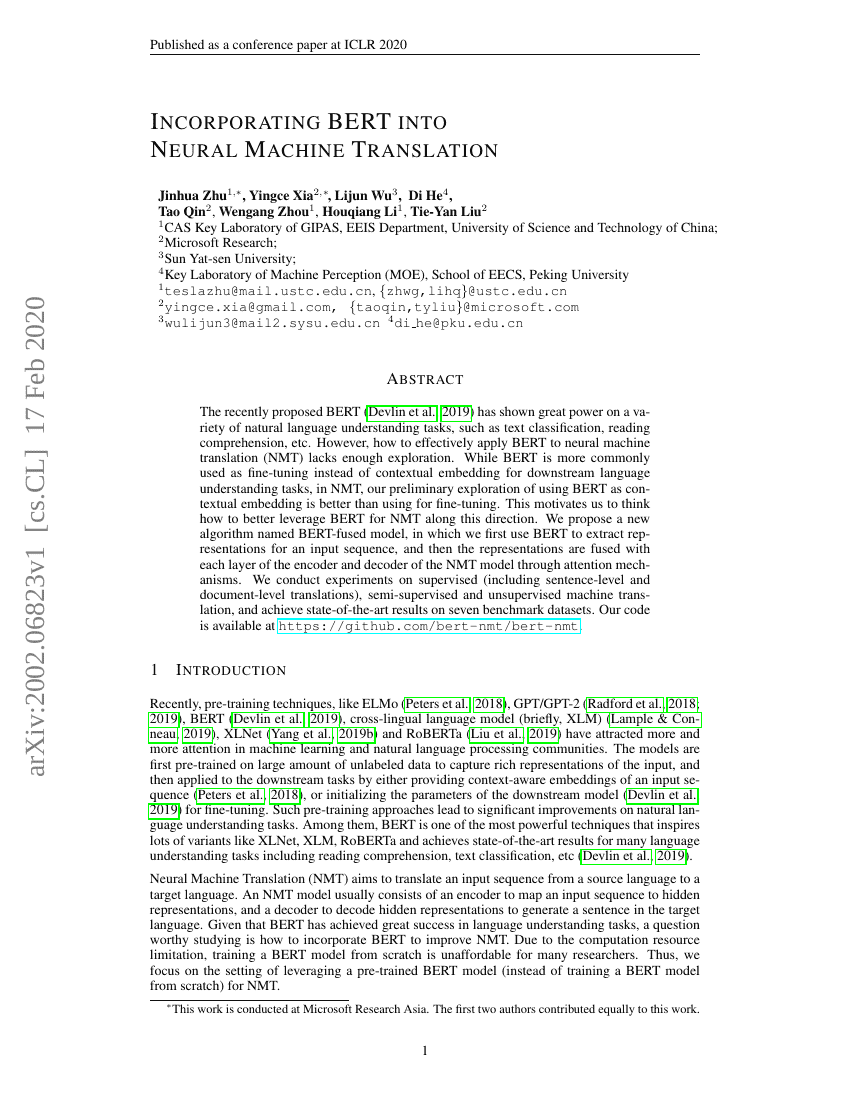Command Palette
Search for a command to run...
Jinhua Zhu Yingce Xia Lijun Wu Di He Tao Qin Wengang Zhou Houqiang Li Tie-Yan Liu

Abstract
The recently proposed BERT has shown great power on a variety of natural language understanding tasks, such as text classification, reading comprehension, etc. However, how to effectively apply BERT to neural machine translation (NMT) lacks enough exploration. While BERT is more commonly used as fine-tuning instead of contextual embedding for downstream language understanding tasks, in NMT, our preliminary exploration of using BERT as contextual embedding is better than using for fine-tuning. This motivates us to think how to better leverage BERT for NMT along this direction. We propose a new algorithm named BERT-fused model, in which we first use BERT to extract representations for an input sequence, and then the representations are fused with each layer of the encoder and decoder of the NMT model through attention mechanisms. We conduct experiments on supervised (including sentence-level and document-level translations), semi-supervised and unsupervised machine translation, and achieve state-of-the-art results on seven benchmark datasets. Our code is available at \url{https://github.com/bert-nmt/bert-nmt}.
Code Repositories
Benchmarks
| Benchmark | Methodology | Metrics |
|---|---|---|
| machine-translation-on-wmt2014-english-french | BERT-fused NMT | BLEU score: 43.78 |
| machine-translation-on-wmt2014-english-german | BERT-fused NMT | BLEU score: 30.75 |
| unsupervised-machine-translation-on-wmt2014-2 | BERT-fused NMT | BLEU: 38.27 |
| unsupervised-machine-translation-on-wmt2016-5 | BERT-fused NMT | BLEU: 36.02 |
Build AI with AI
From idea to launch — accelerate your AI development with free AI co-coding, out-of-the-box environment and best price of GPUs.